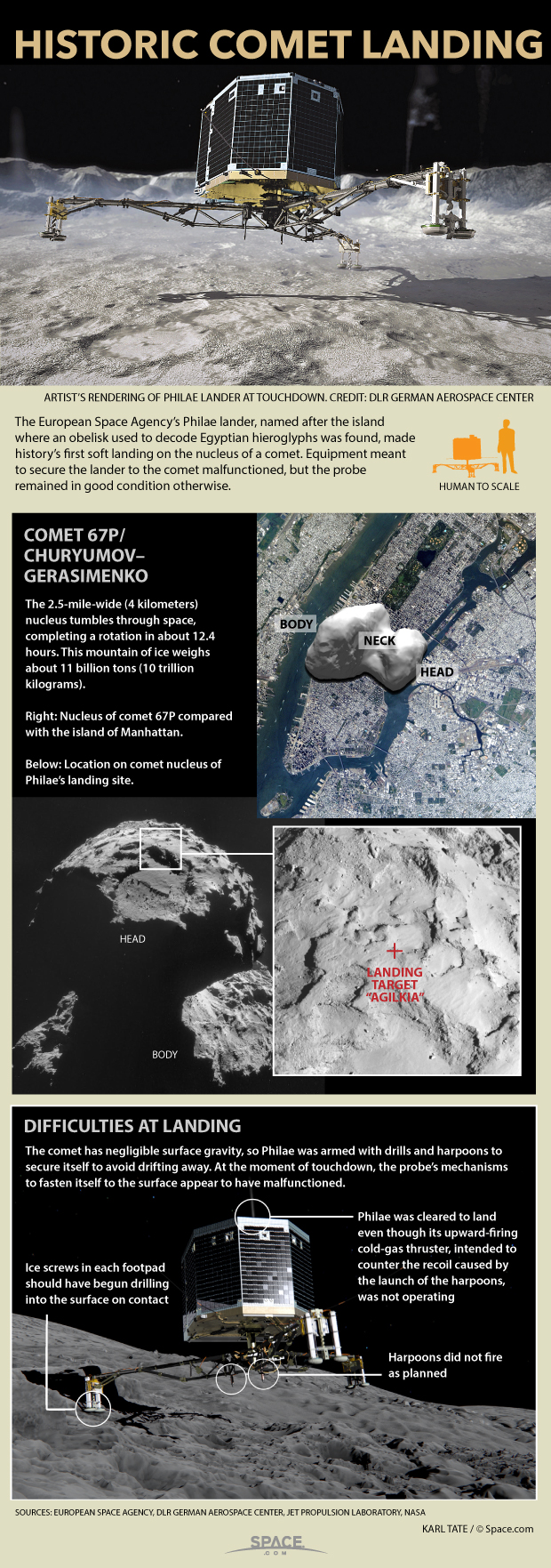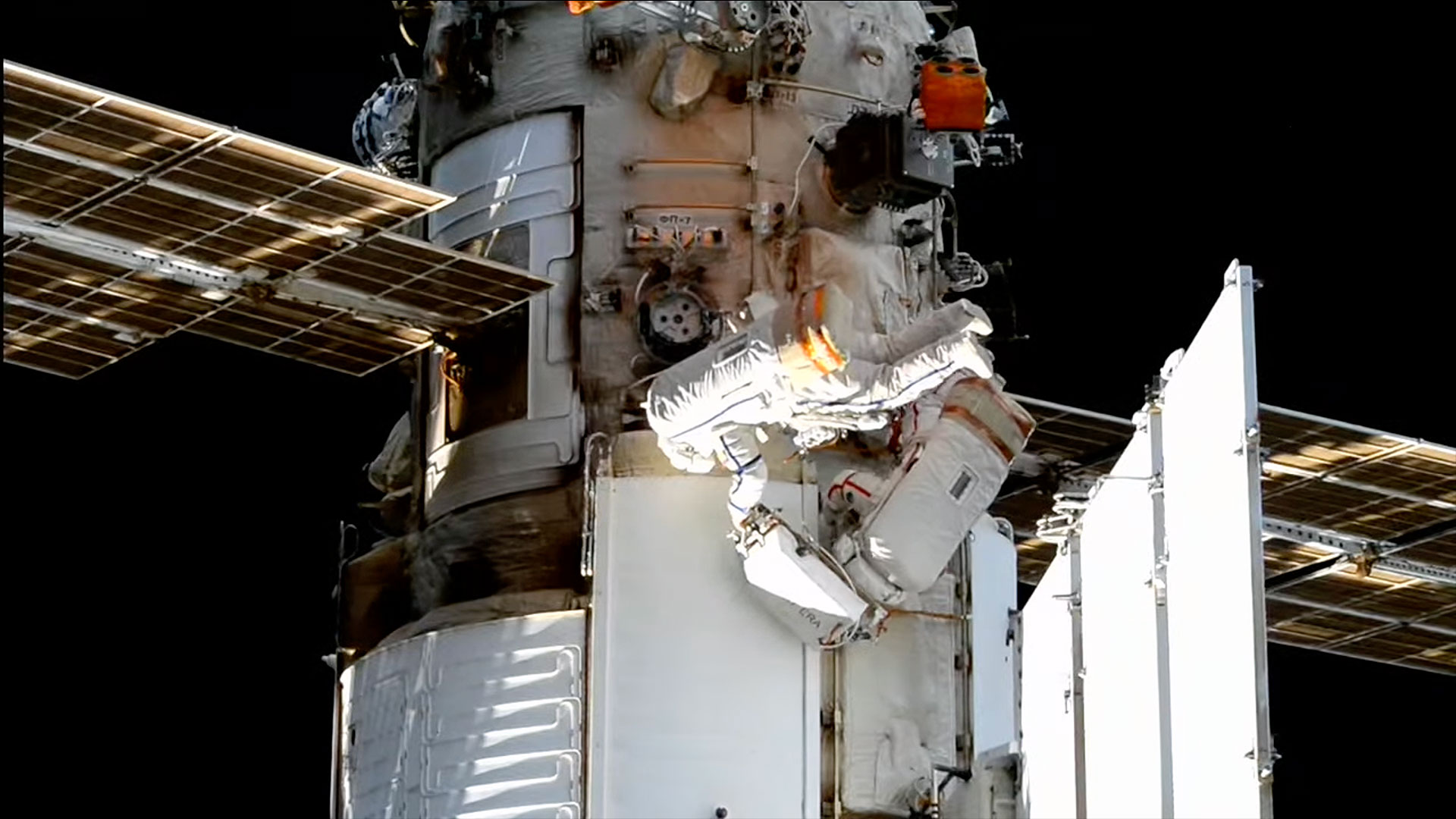Comet Landing with Rosetta's Philae Probe Explained (Infographic)

The European Space Agency's Rosetta mission is set to make history's first soft landing on the nucleus of a comet. To do it, Rosetta will release the Philae lander on Nov. 12, 2014 for its rendezvous with the Comet 67P/Churyumov-Gerasimenko, or 67P. Watch the landing live here.
Rosetta Mission's Historic Comet Landing: Full Coverage
Comet 67P's 2.5-mile-wide (4 kilometers) nucleus tumbles through space, completing a rotation in about 12.4 hours. This mountain of ice weighs about 11 billion tons (10 trillion kilograms). [See comet photos from the Rosetta spacecraft]
Daring Comet Landing Shown in Animation
The comet has negligible surface gravity, so Philae must actively work to secure itself to the ground to avoid drifting away. At the moment of touchdown, the probe’s tripod landing gear absorbs the impact. Then several actions occur at once:
- Ice screws in each footpad immediately begin drilling on contact.
- Upward-firing thruster ignites to counter the recoil caused by the launch of the harpoons.
- Harpoons shoot into the ground and lines retract to pull the probe down to the surface.
The Philae lander is named after the island where an obelisk used to decode Egyptian hieroglyphs was found. Its Rosetta spacecraft was named for the Rosetta Stone, which helped scientists decipher Egyptian hieroglyphs.
Follow us @Spacedotcom, Facebook and Google+.
Breaking space news, the latest updates on rocket launches, skywatching events and more!
Join our Space Forums to keep talking space on the latest missions, night sky and more! And if you have a news tip, correction or comment, let us know at: community@space.com.

Karl's association with Space.com goes back to 2000, when he was hired to produce interactive Flash graphics. From 2010 to 2016, Karl worked as an infographics specialist across all editorial properties of Purch (formerly known as TechMediaNetwork). Before joining Space.com, Karl spent 11 years at the New York headquarters of The Associated Press, creating news graphics for use around the world in newspapers and on the web. He has a degree in graphic design from Louisiana State University and now works as a freelance graphic designer in New York City.
